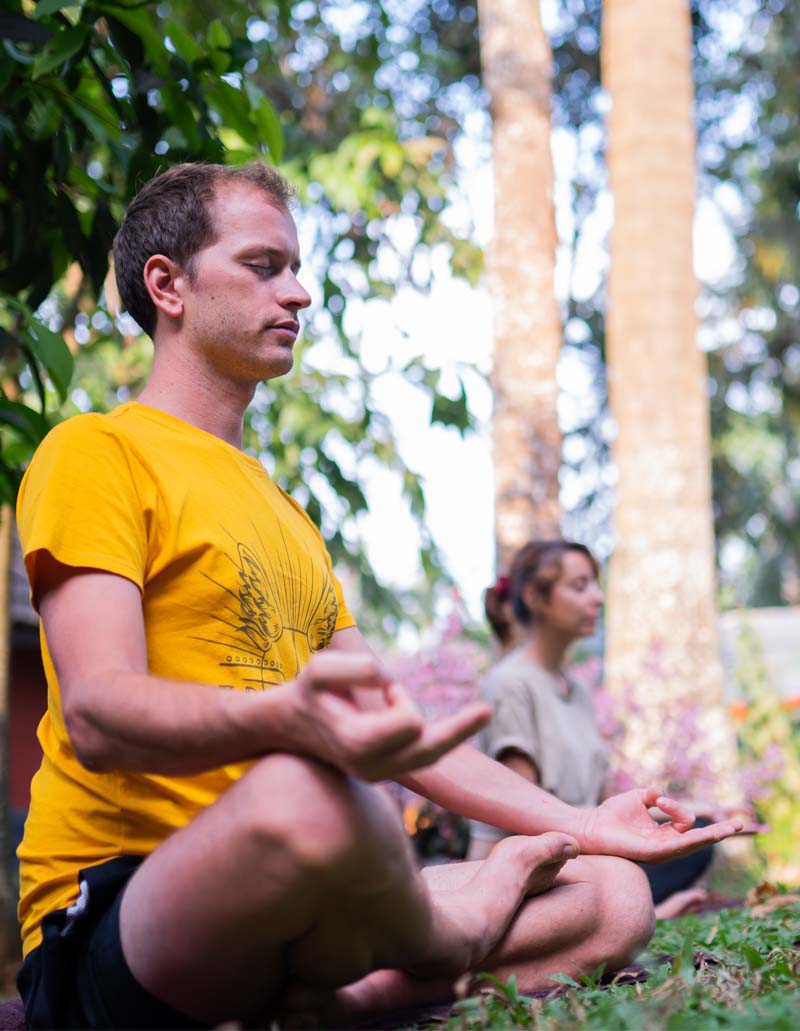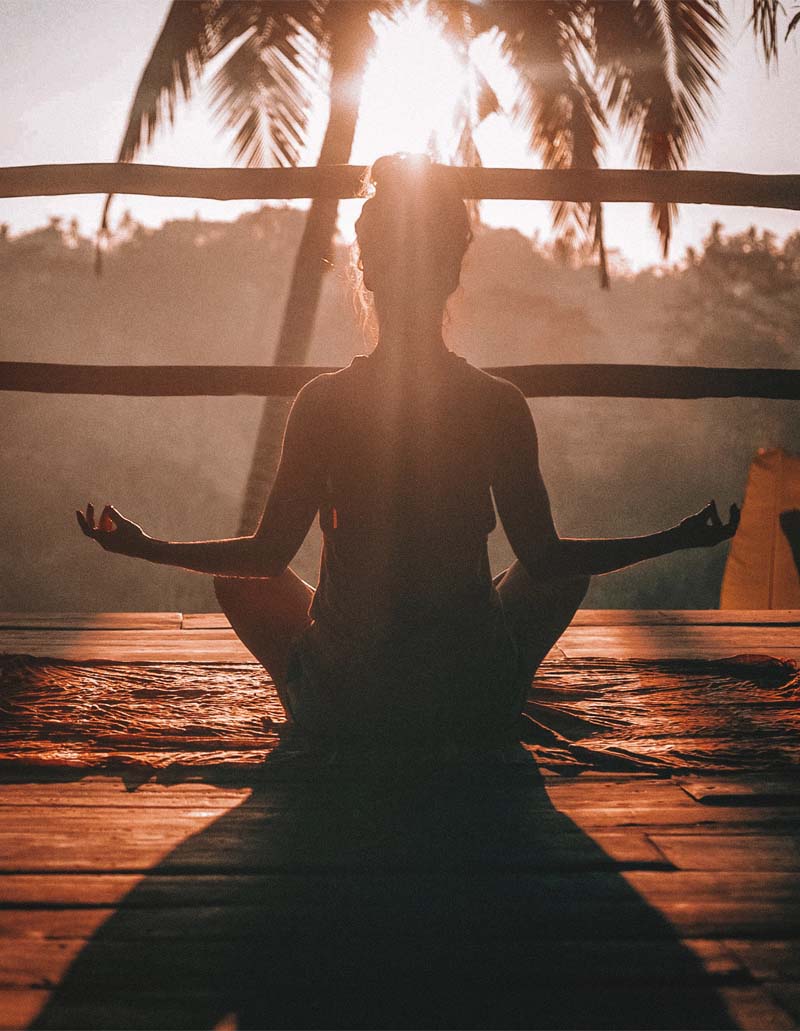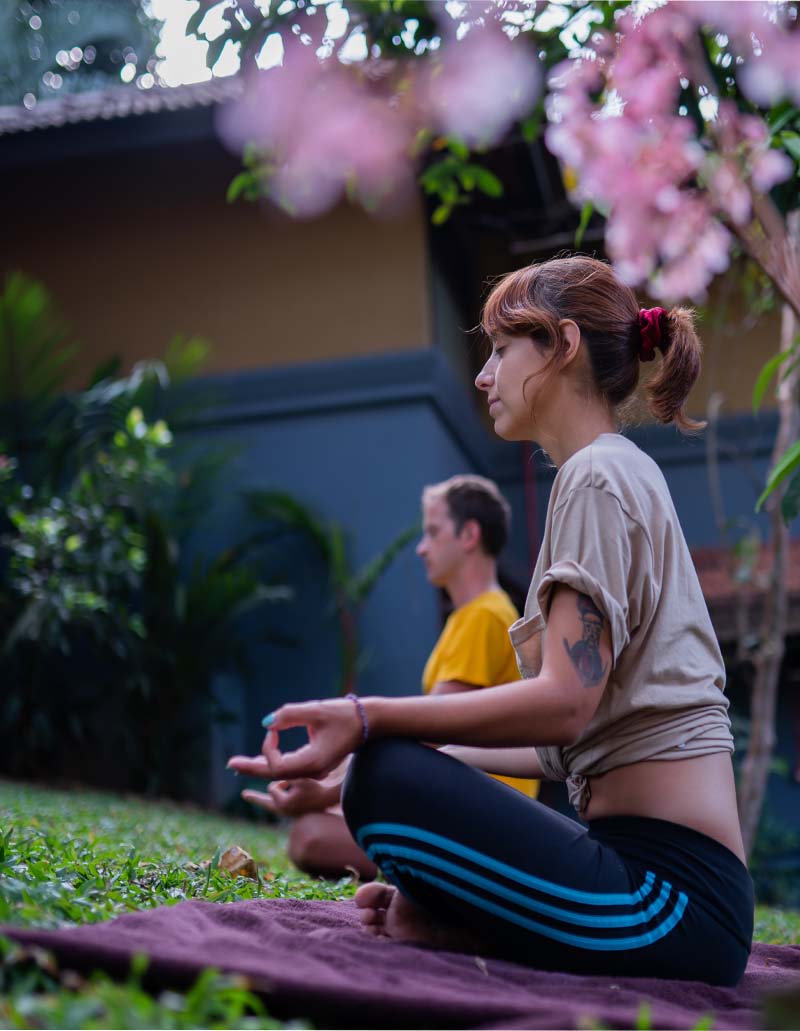Get Support
123-456-789-10
YOGA AND MEDITATION
Ayurveda and yoga stem from the same philosophy. No surprise then that they both compliment each other beautifully. Both examine the body and mind from the perspective of maintaining of health and treatment of diseases. Only recently embraced in the West, yoga has been practiced in India for hundreds of years as a powerful complement to Ayurvedic medicine and healing. Yogic postures and breathing techniques have long been known for their health benefits.
The 15th century manual on Yoga practice, the Hatha Yoga Pradipika, states that practicing the postures (asana) will result in “sturdiness, absence of disease and lightness”. Some of the asanas activate the endocrine system, which consists of ductless glands. The endocrine system is responsible for keeping all the vital organs healthy and functioning properly, and aims at the perfection of the body.
Apart from the curative value, yoga has a calming quality and brings tranquillity into our lives. The two aspects of yoga thus make it a powerful tool for coping with the physical and mental stress of modern day living.


AYURVEDIC LIFESTYLE AND EXERCISE
Yoga and exercise are important aspects of good health in Ayurveda. The type of exercise, though, should be suited to your specific constitution. Ayurveda tells you which kind and how much exercise you should perform to stimulate the digestive fire (Agni), improve digestion, relieve constipation, and induce relaxation, as well as how to avoid issues caused by too much exercise. Walking is probably the best exercise for all constitutions, as is traditional hatha yoga. Ayurveda suggests a workout at half the body’s capacity, just until one breaks a sweat. This will stimulate the digestive fire (Agni) and relieve constipation. Relaxation and sound sleep are other pleasant effects. Over-exercising can cause dehydration, breathlessness, muscle aches, chest pain, and may eventually lead to arthritis, sciatica, or heart conditions.
It is the energy balance of your body that decides how much you can exercise. Kapha individuals can perform the most strenuous type of exercise. Pitta people should do a medium amount of exercise and only during the coolest time of day. Those with a Vata constitution should do the gentlest type of exercise; even if they love to jog, yoga and stretching would be better choices.
THE VEDIC TRADITION
When following Ayurveda, your lifestyle is crucial. Ideally, one should wake with or before the sun for meditation. In the Vedic tradition, the pre-dawn hours are known as Brahma muhurta(god’s hour). This quiet, calm time, when the world around you is still asleep, is considered most conducive to meditation. Even if it cannot be done before dawn, regular meditation is essential for good health. It helps rejuvenate and purify the entire nervous system, calms the mind, and brings deeper awareness, peace and joy.Ayurveda tells you which kind and how much exercise you should perform to stimulate the digestive fire (Agni), improve digestion, relieve constipation, and induce relaxation, as well as how to avoid issues caused by too much exercise. Only recently embraced in the West, yoga has been practiced in India for hundreds of years as a powerful complement to Ayurvedic medicine and healing. Yogic postures and breathing techniques have long been known for their health benefits.


